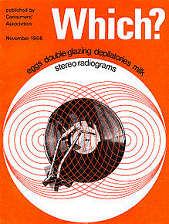


|
 |
|
 |
1954
The UK Television Act set up the ITA and laid down rules for future
TV advertising - television ads had to be 'clearly distinguishable and recognisably
separate from the rest of the programme' and only 'at the beginning or end
of a programme or in the natural breaks therein'. The Advertising Advisory
Committee was set up 1956 The Merchandise Act was introduced, a forerunner of the 1968 Trades Descriptions Act 1957 Subliminal advertising was banned by the IPA (The Institute of Practitioners in Advertising) 1959 The Independent Advertising Enquiry Committee was set up by the Labour party to monitor 'all kinds of socially harmful advertisements'. In 1961 an independent commission was set up under the chairmanship of Lord Reith that recommended the establishment of a National Consumer Board financed by a levy on advertising 1960 Advertising was allowed to be placed on taxis but the use of aircraft or balloons for advertising was prohibited 1961 The Advertising Association's Conference took place in May, recommending the setting up of an Advertising Standards Authority under an independent chairman to control and enforce advertising standards. Following this the Council of the Advertising Association resolved to bring into being the Advertising Standards Authority 1962 In January the first edition of the British Code of Advertising Practice was issued, a set of formal standards that had to be observed and applied from all sides of the business. Independent television companies agreed to abide by this 'voluntary' code. The Advertising Standards Authority was set up as a fully independent body, chaired by Professor Arnold Plant of the London School of Economics. The ASA's inaugural meeting took place on 24th September. Controls on outdoor advertising were introduced. Following the Royal Physicians report linking smoking with health problems, the ITA tobacco manufacturers code of practice brought in restrictions on tobacco commercials, ending romantic situations and 'an over-emphasis of pleasure' in tobacco advertising. Adverts were also limited to periods when children were least likely to be watching 1963 The advertising of betting was restricted. Television 'infomercial' advertising was banned in the UK in October. Guidance was issued by the ASA on 'Advertising for Slimming' 1964 CAP spot checks for certain industry adverts such as slimming aids, vitamins, cigarettes, hair treatments, knitting and sewing machines, beauty treatments, gin, cocktails, vodka and health food drinks 1965 Travel industry guidance was published to ensure that holidaymakers did not suffer 'inconvenience, disappointment or loss' as a result of advertisements. The advertising of cigarettes was banned on television but cigars and pipe tobacco continued to be advertised until the early '90s 1966 Pregnancy testing kit ad restrictions were lifted and the ASA advised publishers they could use their discretion subject to certain safety conditions 1967 Advertisements giving hire purchase terms were regulated 1968 The Trade Descriptions Act gained Royal Assent, making it an offence to apply a 'false trade description' (in effect, any statement which might influence a purchasing decision) to any goods. A system was introduced to control ads for medicines 1969 A revised edition of Independent Code of Advertising Standards and Practice was issued referencing new legislation: Trade Descriptions Act, Medicines Act and Children (Performers) Regulations. The ASA responded to high numbers of complaints about circulars for pornographic books. A pre-publication checking system was later introduced by the Direct Mail Producers Association. 1970 Advertising Codes of Practice were tightened so alcohol advertising was only allowed to promote specific brands, not to encourage drinking in general 1971 The first Industry/Government recommendations on tobacco advertising and promotion control and a Government Health Warning on cigarette adverts were accepted by voluntary agreement. 1972 The Independent Television Authority became the Independent Broadcasting Authority (IBA) with increased responsibility to cover commercial radio as well as television, with a new IBA Code for radio & TV advertising, including sponsorship 1973 The IBA Authority Act was passed to control advertising on commercial TV & radio. Cigarette advertising was banned on radio. The Fair Trade Act and Office of Fair Trading were set up. Commercial radio was launched in the UK on October 1st |
British Standards
The logo was initially used in 1930 as a trademark on tramway rails and was the major factor in reducing the number of different rail specifications from 75 to 5. The first actual Kitemark was awarded to the General Electric Company for light fittings in 1926. For several decades, the use of the Kitemark was almost entirely limited to engineering and technical applications and appliances until the 1950s, when the consumer product 'boom' led to greatly increased interest and concerns about product safety as the marketplace was being flooded with consumer goods, many of which were of poor or inconsistent quality. The Women's Advisory Committee was formed in 1951 to advise on standards affecting the domestic consumer. It was the precursor of today's Consumer and Public Interest Network which coordinates consumer representation on all BSI's technical committees for consumer products. As a result, 1953 saw the Kitemark being applied to domestic furniture, pressure cookers and motorcycle helmets to help consumers know whether the goods on offer were well made. Quality standards were also published for subjects as diverse as checking air pollution, nuclear energy, safety colours for use in industry, school and office furniture and the carrying of live animals by air transport. In 1959 the Test House was opened at at Hemel Hempstead, Herts, to test equipment for export to Canada, the beginning of Healthcare and Testing Services. Government regulations also introduced the compulsory application of the Kitemark for car seat belts and motorcycle helmets, the tests for which were conducted at Hemel Hempstead. The Weights and Measures Act 1963 A Weights and Measures Act is an Act of Parliament determining the regulation of weights and measures, defining lawful weights and measures and the mechanism for inspection and enforcement of their use. During the last 1,000 years there have been many laws concerning weights and measures in the UK and modern legislation may, in addition to specific requirements, set out circumstances under which the government may amend the legislation by means of statutory instruments. The 1963 Weights and Measures Regulations were one such revision. Prior to the Weights and Measures Act 1985, W&M Acts were only concerned with trade law where the weight or size of the goods being traded is important. The 1985 Act broadened the scope to encompass aspects covered by the EEC directive 80/181/EEC. Advertising Standards Authority / Committee of Advertising Practice (CAP) and The Trade Descriptions Act
In 1961 the Council of the Advertising Association established a self-regulatory system for non-broadcast advertising, drafting the first British Code of Advertising Practice. In 1962 the industry set up the Advertising Standards Authority (although not a public authority in the accepted sense) to adjudicate on complaints about any advertisements thought to have breached the new Code, holding its inaugural meeting on 24th September. The ASA operated under an independent chairman with no vested interest within the industry. Soon after the inception of the Authority the Molony Committee heard, but rejected, proposals to introduce a system to regulate the advertising industry by statute. The Committee stated that it was satisfied that the industry could be regulated effectively from within by the Advertising Standards Authority with the proviso that a self-regulatory system depended upon the satisfactory working of the Authority and the maintenance of acceptable standards. |
|||||
 |
Which? Magazine The interest and progress in American, German and Swedish consumer affairs was mirrored in the UK in 1957 with the launch of 'Which?' magazine, the external organ of the Association for Consumer Research (renamed 'The Consumer's Association' shortly afterwards), that started as a 32-page publication containing reports on electric kettles, cake mixes, sunglasses, aspirin, scouring powders, non-iron cottons and British cars. The magazine was an immediate hit with the general public due to the fact that it carried out independent and authoritative testing on popular everyday products and also advised on the 'best buys'. The organisation attracted 84,000 members in the first year, rising to 150,000 in 1959, administrating the membership services from its offices in Hertford. By 1969 it had attracted 600,000 with members joining at the rate of 2,000 a week. In 1960, Which? assisted in the founding of the International Organisation of Consumer Unions (later Consumers International). In 1962 it expanded its coverage with the launch of the first quarterly Which? car supplement (becoming Motoring Which? in 1965), followed by the introduction of Money Which? in 1968. Products tested during the Sixties included contraceptives (in 1963) and paper dresses (in 1967). Which? Magazine and The Consumer's Association sat happily in the gap between the technicalities of the BSI Kitemark (most people had no idea what a British Standard award actually meant) and the Council of Industrial Design's 'Design Index' of products which acclaimed aesthetic taste but stated nothing about performance, reliability or value. |
 
|
The general vociferation over
the thalidomide tragedy was one of the main factors in the instigation of
medicines regulation in the UK. Thalidomide, a drug developed by German
firm Chemie Grünenthal, was prescribed to women during the late 1950s and
early 1960s against nausea and to alleviate morning sickness in the first
few months of pregnancy but had the side effect of causing serious unpredicted
birth defects. In order to avoid the likelihood of future occurrences of this type the Committee on Safety of Drugs was set up in 1963, subsequently becoming the Committee on Safety of Medicines (CSM) under the terms of the Medicines Act of 1968 that provided the legal mechanism for the control of medicines in the UK. |

 |
Mary Whitehouse began her activism in 1963 with a letter of complaint to the BBC giving her perceptions of its excessive portrayals of sex, violence and bad language. She was a prominent figure in the 'Clean-Up TV' pressure group whose first public meeting was held in Birmingham's Town Hall on 5th May 1964 and which attracted over two thousand people. |
|
|
All
Original Material Copyright SixtiesCity
Other individual owner copyrights may apply to Photographic Images |